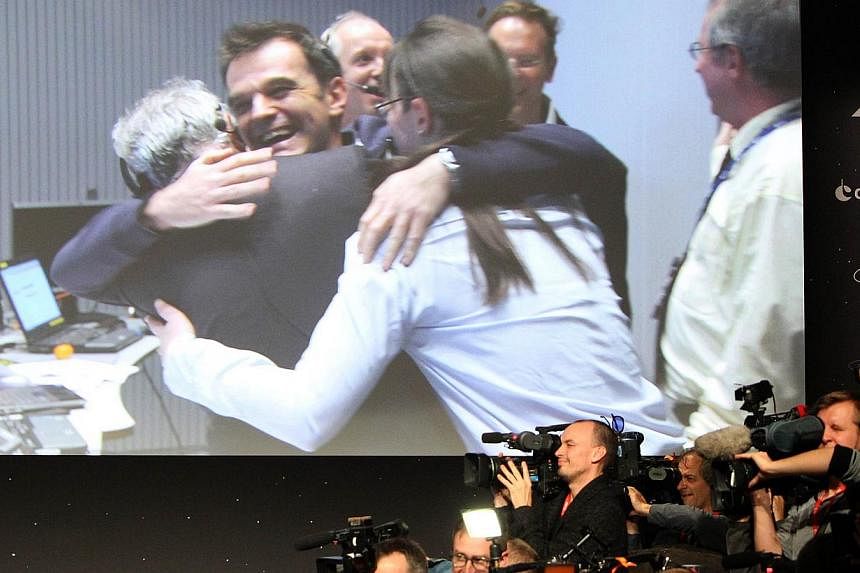DARMSTADT, Germany (AFP) - The European probe Philae has made the first-ever landing on a comet, a crowning phase in a quest to explore the origins of the Solar System, the European Space Agency (ESA) said Wednesday.
The robot lab landed on Comet 67P/Churyumov-Gerasimenko around seven hours after separating from its mother ship Rosetta more than 510 million kilometres from Earth, it said.
"Philae is talking to us," said Stephan Ulamec, the lander's manager. "We are on the comet."
"We definitely confirm that the lander is on the surface," said Andrea Accomazzo, flight operations director.
"We can't be happier than what we we are now."
"This is a big step for human civilisation," said the agency's director-general, Jean-Jacques Dordain, as a crowd of scientists, guests and VIPs cheered and applauded in relief.
"Touchdown! My new address: 67P!" Philae's team tweeted.
Scientists hope the lander, equipped with 10 instruments, will unlock the secrets of comets - primordial clusters of ice and dust that may have helped sow life on Earth.
Getting from Earth to a comet that is travelling towards the Sun at 18 kilometres per second was a landmark in space engineering and celestial mathematics.

The €1.3 billion (S$2 billion) Rosetta mission was approved in 1993.
Rosetta, carrying Philae, was hoisted into space in 2004, and took more than a decade to reach its target in August this year, having used the gravitational pull of Earth and Mars as slingshots to build up speed.
The pair covered 6.5 billion km together before the separation Wednesday prior to the landing.
Watch the video of the Rosetta Mission here.

